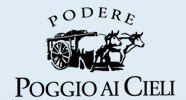Pienza
Pienza, a small town near Siena, is a rare example of Renaissance town building. Defined, from time to time, the "ideal city", the "utopian city", it represents one of the best planned Renaissance towns, where a model of ideal living and governing was realized thus working out the idea of a town able to satisfy the need for a pacific, civil and hardworking living. It represented the so called utopia of the "civitas" vainly cherished by people for centuries.Pienza has at present two museum, a third one into being. Its location in the middle of Val d'Orcia, a wonderful and untouched valley, enables the town to perfectly embody the basic interest which the humanistic architecture gave to the relationship man - nature.
Nowadays Pienza is part of a territorial system called "Parco artistico, naturale e culturale della Val d'Orcia", which aims at preservation of the extraordinary artistic heritage of the five boroughs which constitute it: Castiglion d'Orcia, Montalcino, San Quirico d'Orcia, Radicofani and Pienza.
The center of Pienza was completely redesigned by Pope Pius II in Renaissance times. He planned to transform his birthplace into a model Renaissance town. The architect Bernardo Rossellino was commissioned to build a Duomo, papal palace and town hall, the construction were completed in three years.
Duomo
The Duomo was built by the architect Rossellino (1459) and is now suffering from serious subsidence at its eastern end. There were cracks in the walls and floor of the nave, but the splendid classical proportions are remained inctact. It is flooded with ligth from the vast stained glass windows request by Pius II; he wanted a domus vitrea (litterally "a house of glass"), which would symbolize the spirit of intellectual enlightenment of the Humanist age.
Palazzo Piccolomini
The palazzo is next door to the Duomo and was home to Pius II's descendants until 1968. Rossellino's design for the building was influenced by Leon Battista Alberti's Palazzo Rucellai in Florence. The appartments open to the public include Pius II's bedroom and library. At the rear of the palazzo there is an ornate arcaded courtyard and a triple-tiered loggia looking out on the garden. From here there are spectacular views across to the wooded slopes of the Monte Amiata.
Pieve di Corsignano
Pope Pius II was baptized in this 11 th. century Romanesque parish church on the outskirts of Pienza. It has an unusual round tower and a doorway decorated with flower mytholgical motifs. A crib is sculptured on the architrave of the side doorway.
Photogallery
Pienza
| Podere Poggio ai Cieli Loc. Santa Maria, 21/b 53037 San Gimignano (SI), Italy GPS COORDINATES Latitude: 43.5107 Longitude: 11.0719 |
CONTACTS: Tel: +39.348 3043766 E-mail: info@poggioaicieli.it PEC: poggioaicieli@pec.it |
COMPANY: Poggio ai Cieli di Lucii Leonardo & C. sass Loc. Santa Maria 21/b San Gimignano (SI) , Italy VAT 01155150525 Cod. Fisc. 01155150525 REA 124858 Office Business Registry registration nbr. 01155150525 Social capital 5000,00 |


Web by 

|















































